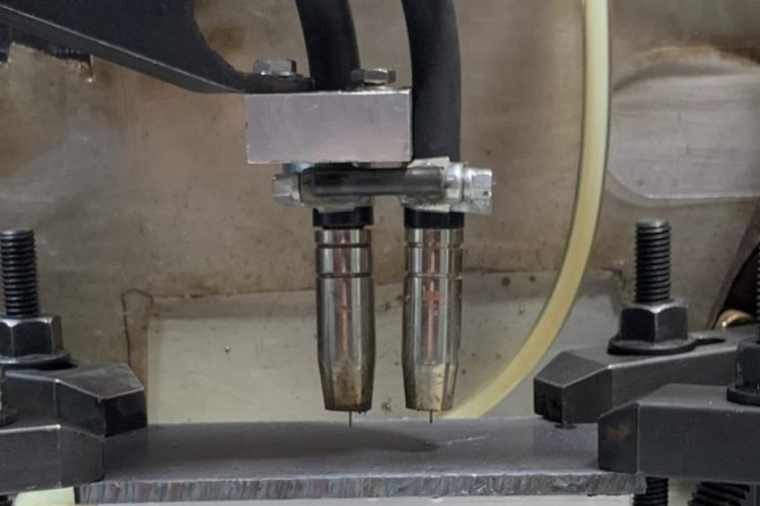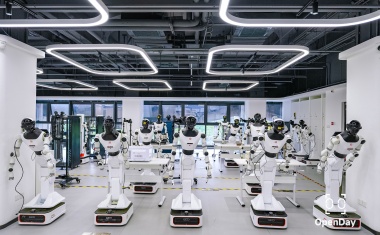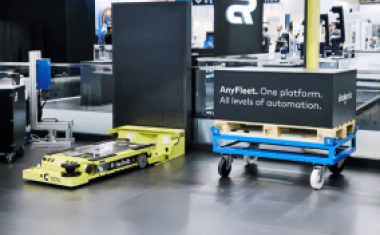New 3D-printing method builds structures with two metals
Printed bimetallic material proved to be significant stronger than either metal alone.
Taking a cue from the structural complexity of trees and bones, Washington State University engineers have created a way to 3D-print two types of steel in the same circular layer using two welding machines. The resulting bimetallic material proved 33 % to 42 % stronger than either metal alone, thanks in part to pressure caused between the metals as they cool together. The new method uses commonplace, relatively inexpensive tools, so manufacturers and repair shops could use it in the near term. With further development, it could potentially be used to make high-performance medical implants or even parts for space travel, said researcher Amit Bandyopadhyay.

“It has very broad applications because any place that is doing any kind of welding can now expand their design concepts or find applications where they can combine a very hard material and a soft material almost simultaneously,” said Bandyopadhyay. The research team borrowed the idea from nature, noting that trees and bones get their strength from the way layered rings of different materials interact with each other. To mimic this with metals, the researchers used welding equipment commonly found in automotive and machine shops, integrated inside a computer numerical control or CNC machine. The new hybrid setup creates parts using precise computer programming and two welding heads.
In a demonstration, the two welding heads worked one right after the other on a circular layer to print two metals, each with specific advantages. A corrosion-resistant, stainless-steel core was created inside an outer casing of cheaper mild steel like that used in bridges or railroads. Since the metals shrink at different rates as they cool, internal pressure was created – essentially clamping the metals together. Tests on the result showed greater strength than either stainless steel or mild steel has on their own. Currently, 3D printing with multiple metals in a welding setup requires stopping and changing metal wires. The new method eliminates that pause and puts two or more metals in the same layer while the metals are still hot.
“This method deposits the metals in a circle instead of just in a line. By doing that, it fundamentally departs from what’s been possible,” said doctoral student Lile Squires. “Going in a circle essentially allows one material to bear hug the other material, which can’t happen when printing in a straight line or in sandwiched layers.” The capability to strengthen 3D-printed metal parts layer-by-layer could give automotive shops new options soon with the ability to quickly create strong, customized steel parts. Bimetallic, torque-resistant axle shafts, for instance, or cost-effective, high-performance brake rotors could be developed.
In the future, the researchers see the potential for medical manufacturing processes that print joint replacements with durable titanium on the outside and an inner material such as magnetic steel with healing properties. Likewise, structures in space could have a high-temperature resistant material surrounding inner material with cooling properties to help the structure maintain a consistent temperature. “This concept has both welders printing, so we can use multiple materials in the same layer itself, creating advantages as they combine,” said Bandyopadhyay. “And it doesn't have to stop at just two materials. It can be expanded.” The researchers have submitted a provisional patent application for this development. (Source: WSU)











